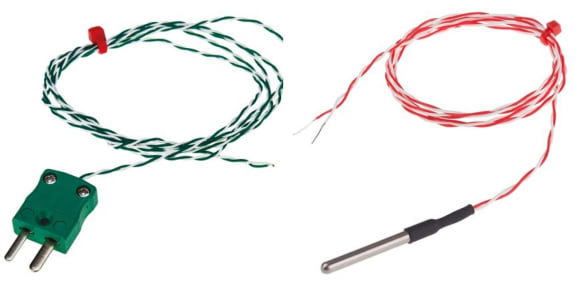Hints and Tips - Thermocouple Signal Transmission
Follow articleHow do you feel about this article? Help us to provide better content for you.
Thank you! Your feedback has been received.
There was a problem submitting your feedback, please try again later.
What do you think of this article?
Thermocouple Signal Transmission
Just a few application notes I have found to be useful with regard to the usage of thermocouples and PT100’s. These may be common knowledge for regular users but may be useful for Engineers who have not previously been involved with these useful temperature monitoring devices.
1. Always use the correct type thermocouple wire and connectors if you are extending the wire from the Thermocouple. Using copper or other conductors will form another thermocouple junction and give wrong readings. (PT100’s are resistive – so copper wire can be used).
2. If the signal needs to be sent over a distance, say over 5 Meters (as a rule of thumb) – it’s best to use a converter to convert the signal to a more robust type. 4-20 mA is commonly used and there are ‘In head’ and Din Rail Mounted Signal Converters readily available.
3. Another factor with regard to the choice of Thermocouple Wire is that of screening. The Thermocouple signal is only a few milliVolts and can easily be distorted by electromagnetic noise. If motors or other ‘noisy’ equipment is in the vicinity it is best using a screened wire.
4. Finally, there are special thermocouple connectors available and these can be used to make ‘quick connect’ usage easy.

